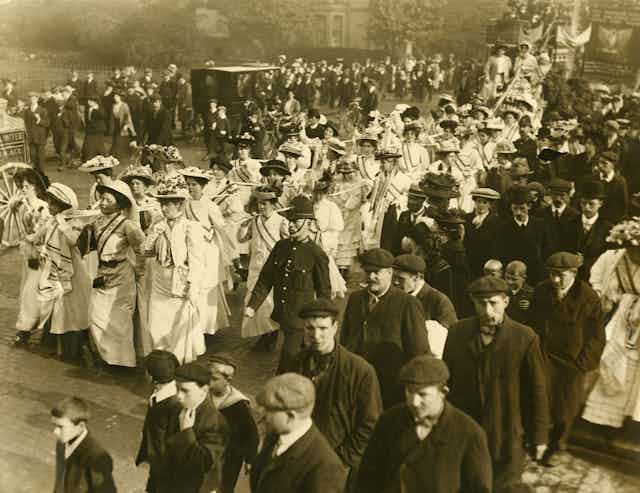As we mark the centenary of women’s votes in the UK, it’s important to reflect both on the achievements of the women’s rights movements as well as the work that remains to be done. Despite the progress of the past 100 years, recent events, such as the Presidents Club scandal, highlight the deeply rooted nature of gender inequalities in modern society.
The gender pay gap persists and we’ve only recently come to talk about the pervasiveness of sexual harassment. It’s clear that to achieve meaningful equality there needs to be a fundamental shift in the way society views women’s contribution to politics and the economy. Recognising that society and the economy are, themselves, gendered is a starting point – as is acknowledging that different women have different experiences. This is the challenge for women’s rights activists in the 21st century: opening a space for dialogue, cohesion and solidarity through difference, where a diverse range of voices are provided equal status and legitimacy.

The anniversary of the 1918 milestone is the perfect moment to think about this. After all, only some women were given the right to vote back then. Gaining the right to vote represents entry into a political community; it’s supposed to pave the way to equal citizenship rights. Yet, in February 1918, while the vote was extended to all men, it was only given to women over the age of 30 who owned property.
By establishing a higher threshold for membership of this community, the law ultimately reinforced women’s status as second class citizens. Women would have to wait another ten years before achieving equal status with men, when parliament ratified the 1928 Equal Franchise Act.
A new focus, an old problem
The past century has seen the introduction of a number of legislative changes aimed at improving women’s position and standing in society, politics and the economy. It should not be assumed, however, that there have not been significant bumps in the road. Progress has been slow and continues to be rather uneven.
The end of World War II was a critical moment in the history of women’s participation in the political and economic life of the country. As a result of women’s contribution to the war effort, the public became more aware of women’s participation in the labour market. This helped to bolster the emergence of a transnational second wave feminist movement in the aftermath of the war.
Key demands of this movement were equal pay, equal treatment, maternity rights and reproductive rights. So in 100 years the debate has shifted to reflect women’s changing roles and expectations of society. From fighting for women’s right to vote, we now talk about women on boards and extending parental leave to serving members of parliament.
But while the focus of debates has changed, gender continues to be a structure of power that underpins both society and the economy. Women remain largely underrepresented in the British parliament and in other positions of power. Focusing simply on access – that is, legal equality – has achieved some change, but has not resulted in a more equal society. Arguably, this approach has failed to address how gender, as a structure of power, shapes every aspect of life.

The persistence of the gender pay gap shows that gender equality policies are not enough to address how the labour market is actually structured. Gender segregation of the labour market, coupled with women’s care burden, continue to result in unequal outcomes and reproduce gender inequalities, despite the good will of governments.
Meanwhile, recent surveys have found that women MPs are regularly subjected to online abuse and threats – and the situation is significantly worse for black and minority women MPs. Addressing the widespread abuse women receive when engaging in political debate needs to become a marker for democracy.
Forward together
The road ahead is therefore still long. Our starting point now needs to be that gender is a process, not a variable. It interacts with other structures of power, such as class and race, to hold women back. This is a more useful way to understand the challenges facing women’s rights activists in the 21st century.
Intersectional feminism provides an important opening for this and future discussions. By recognising race, class, gender, sexuality, disability and legal status as “interlocking systems of oppression”, we can think about what is required to build a more inclusive society based on the principle of solidarity.
In order to achieve lasting change, women’s rights activism has to promote a form of representation that focuses women’s multiple voices. Perhaps most importantly, it has to be based on a politics of solidarity between individuals and communities with diverse experiences. It has to pay homage to the achievements of 100 years of feminist activism while recognising that there is plenty more work to do to achieve a more inclusive and equal society.

